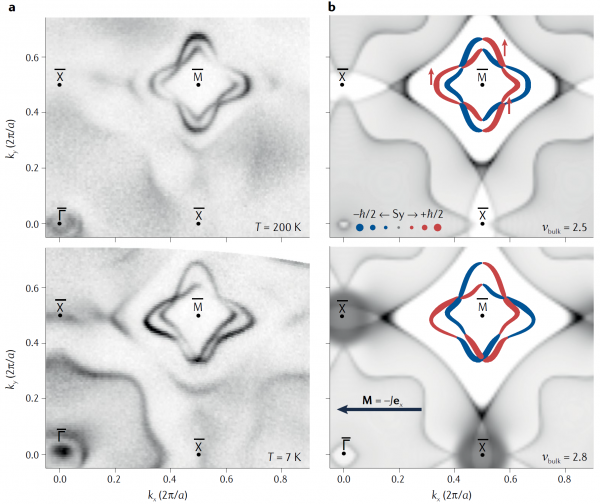Rashba-like physics in condensed matter
Spin–orbit coupling induces a unique form of Zeeman interaction in momentum space in materials that lack inversion symmetry: the electron’s spin is locked on an effective magnetic field that is odd in momentum.
The resulting interconnection between the electron’s momentum and its spin leads to various effects such as electric dipole spin resonance, anisotropic spin relaxation and the Aharonov–Casher effect, but also to electrically driven and optically driven spin galvanic effects. Over the past 15 years, the emergence of topological materials has widened this research field by introducing complex forms of spin textures and orbital hybridization. The vast field of Rashba-like physics is now blooming, with great attention paid to non-equilibrium mechanisms such as spin-to-charge conversion, but also to nonlinear transport effects. This Review aims to offer an overview of recent progress in the development of condensed matter research that exploits the unique properties of spin–orbit coupling in non-centrosymmetric heterostructures.
A few keypoints:
- The Rashba effect is a mechanism that locks the spin of a charge carrier to its momentum and stems from the coexistence of inversion symmetry breaking and spin–orbit coupling.
- The Rashba effect is ubiquitous in condensed matter and exists in a wide variety of systems and heterostructures, including semiconductors, metals, superconductors and correlated materials.
- The physics of the Rashba effect is at the origin of several important phenomena in condensed matter, including spin-to-charge interconversion, non-reciprocal magnetoelectric and magnetoptical response, and anomalous nonlinear effects.
- Depending on the crystal and magnetic symmetries of the system under consideration, complex forms of spin–momentum locking and dispersion can be obtained, leading to a rich zoo of phenomena.

Figure: Cubic Rashba effect and emergence of 2D ferromagnetism at iridium silicide surface of valence-fluctuating EuIr2Si2. a) Fermi surface at 200 K (upper panel) and 7 K (lower panel). The results are derived from angle- resolved photoemission spectroscopy (ARPES). b) The computed Fermi surface for 200 K (upper panel) and 7 K (lower panel), shown as a superposition of projected bulk and slab- derived states calculated within density functional theory. The surface state is highlighted by the spin expectation value Sy in red (Sy > 0) and blue (Sy < 0). The black arrow indicates the direction of the emergent magnetic field.




